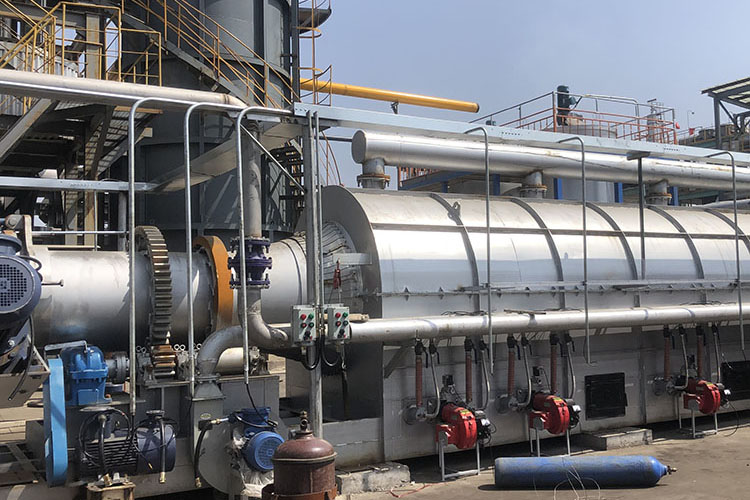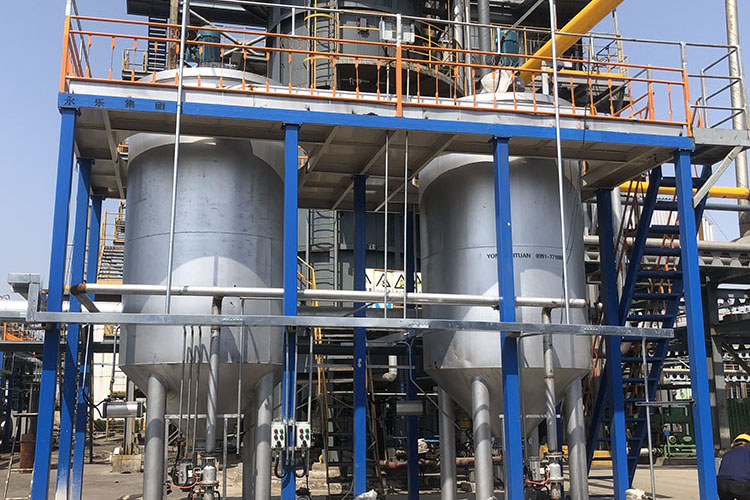In the process of modern urban sewage treatment, the generation of sludge is inevitable. The treatment of sludge is not only related to environmental protection but also the key to realizing resource reuse. In order to treat sludge effectively, various sludge - treatment devices have emerged successively, forming a complete sludge - treatment process. This article will introduce this process and its precautions in detail.
The sludge - treatment process starts with sludge collection and pretreatment. In sewage treatment plants, sludge is usually generated in sedimentation tanks or sludge - thickening tanks. As the sewage is being treated, this sludge is collected regularly. At this stage, workers need to test the moisture content and composition of the sludge so as to select appropriate subsequent treatment methods. Whether the pretreatment is successful or not directly affects the efficiency of the subsequent steps, so this part is particularly important.

The next step is thickening. At this stage, the sludge is further processed through thickening devices such as belt thickeners or centrifuges, aiming to reduce the sludge volume and increase its solid content. Workers need to pay close attention to the operation of thickening devices to ensure their normal performance, prevent insufficient thickening, and avoid overloading of the devices.
Immediately following this is the dehydration process. In this part, devices such as belt - type dewatering machines or centrifugal dewatering machines are used to further reduce the moisture content of the sludge. During the dehydration process, operators need to monitor the dehydration efficiency, ensure that the devices remain in a good clean state, and prevent the treatment efficiency from decreasing due to blockage.
To further reduce the moisture in the sludge, the drying step is essential. The sludge is dried by a sludge dryer. During this process, workers should pay attention to controlling the temperature and humidity of the drying device to prevent the sludge from overheating or getting damp again and ensure the stability of the material.

In the process of sludge treatment, the stabilization stage is also of great importance. The sludge is treated by chemical or biological methods, such as composting, anaerobic digestion or high - temperature incineration, thereby reducing its odor, pathogens and harmful substances. When choosing a stabilization method, a reasonable decision should be made according to the characteristics of the sludge to ensure that the impact of the treated sludge on the environment is minimized.
After the sludge is stabilized, it is disposed of or recycled. According to regulations, the stabilized sludge can be landfilled, incinerated, or used as a soil conditioner, and may even be recycled to produce building materials or fertilizers. However, no matter which method is adopted, it is necessary to ensure compliance with local environmental protection regulations and conduct necessary monitoring to prevent environmental pollution.
Throughout the entire sludge - treatment process, a series of precautions cannot be ignored. First of all, safety protection measures should be in place. Operators need to wear personal protective equipment to prevent contact with harmful substances. Secondly, the equipment should be regularly maintained and inspected to ensure the stability of the treatment process. At the same time, environmental monitoring work is also indispensable to ensure that the entire treatment process does not cause damage to the surrounding environment. In addition, operators need to follow strict operating specifications and receive regular training to improve their understanding of sludge - treatment techniques and safety protection.
Through the above - detailed sludge - treatment process and precautions, we can see that sludge treatment is not a simple task, but a systematic task that requires meticulous management. Only by strictly controlling each link can safe and efficient sludge treatment be achieved, and the environment can be protected to the greatest extent and the sustainable use of resources can be realized.
Yongle Environmental Protection is mainly engaged in the research and development, production and sales of complete sets of technical equipment for organic solid waste disposal and comprehensive utilization. Production and manufacturing, domestic waste treatment equipment, tire pyrolysis equipment, medical waste disposal equipment, hazardous waste disposal equipment, and achieve efficient and comprehensive utilization of resources through independently developed low-temperature anaerobic pyrolysis equipment technology solutions.
Tags:Sludge treatment equipment treatment process and precautions,Sludge treatment equipment treatment,YONGLE GROUP
 Latest news
Latest news


























